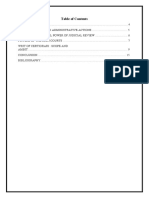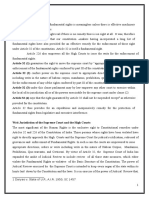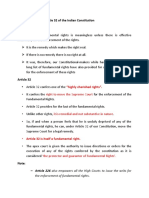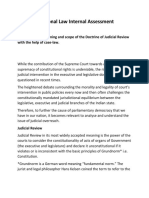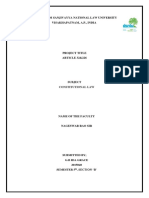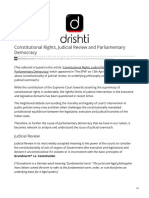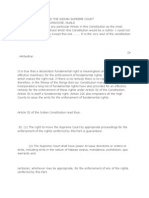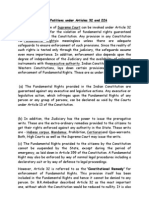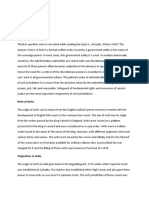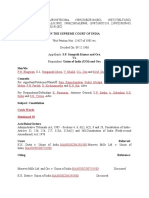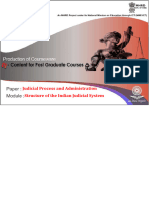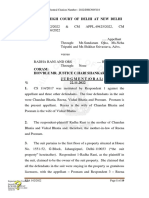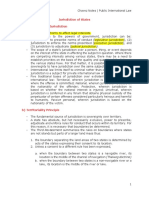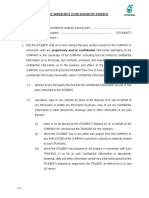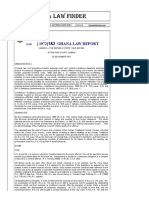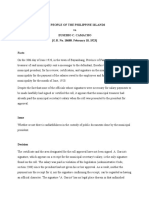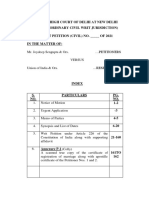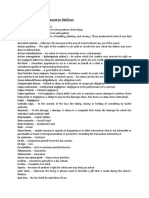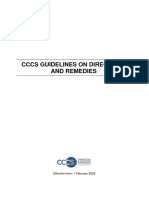0% found this document useful (0 votes)
17 views13 pagesL8 Text
The document discusses the judicial control of administrative actions within the framework of Indian Administrative Law, emphasizing the role of courts in restraining arbitrary power and providing remedies for infringements of legal rights. It outlines the techniques available for individuals to challenge administrative actions, primarily focusing on the writ system established under Articles 32 and 226 of the Indian Constitution, which allows for the enforcement of Fundamental Rights. Additionally, it elaborates on the powers of the Supreme Court and High Courts in exercising judicial review, including the discretionary powers under Article 136 and the supervisory powers under Article 227.
Uploaded by
Khushi JainCopyright
© © All Rights Reserved
We take content rights seriously. If you suspect this is your content, claim it here.
Available Formats
Download as PDF, TXT or read online on Scribd
0% found this document useful (0 votes)
17 views13 pagesL8 Text
The document discusses the judicial control of administrative actions within the framework of Indian Administrative Law, emphasizing the role of courts in restraining arbitrary power and providing remedies for infringements of legal rights. It outlines the techniques available for individuals to challenge administrative actions, primarily focusing on the writ system established under Articles 32 and 226 of the Indian Constitution, which allows for the enforcement of Fundamental Rights. Additionally, it elaborates on the powers of the Supreme Court and High Courts in exercising judicial review, including the discretionary powers under Article 136 and the supervisory powers under Article 227.
Uploaded by
Khushi JainCopyright
© © All Rights Reserved
We take content rights seriously. If you suspect this is your content, claim it here.
Available Formats
Download as PDF, TXT or read online on Scribd
/ 13














